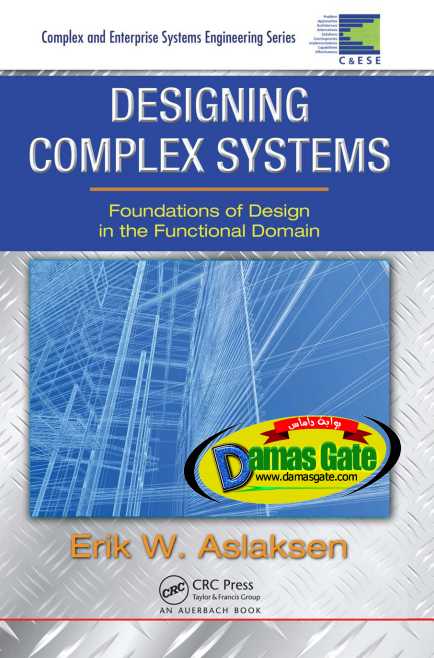Designing Complex Systems
This book attempts to develop a rigorous basis for carrying out that early part of the design process that converts a set of requirements on the service to be provided by a system into requirements on a set of interacting functional elements, which then form the point of departure for the classical part of the design process — the conversion of functional requirements into a physical entity that, through its operation, will satisfy those requirements.

The reason for including this book in a series dedicated to Complex Systems, that is, a class of systems where the elements are predominantly independent agents behaving and interacting in a dynamic fashion, is that, while the systems to which the design methodology applies are not generally in this class, the environment in which the design takes place exhibits these characteristics. In the not too distant past, engineers would exclude consideration of much of this environment from their scope of work, but this narrow focus and limitation of responsibility are no longer accepted, neither by our clients nor by society. On the contrary, the increasing
intrusiveness of such engineered objects as highways, railways, ports, dams, mines, and factories, just to name a few, into our daily lives and environment, coupled with a much greater awareness of the wider consequences of engineering works, has led to the demand of both clients and society for a holistic approach to the design of these objects and to a greatly increased legal regime. As a result, the complexity of the environment in which design takes place is reflected in the design process itself, and it is this complexity, rather than any complexity of the objects themselves, that systems engineering needs to address.
The immediate purpose of the book is to introduce students and practitioners in the field of system design to the basic issues raised by this complexity and to a methodology that addresses those issues in a rigorous and consistent, top-down fashion. A much more indirect purpose, and one with regard to which the book can, at best, initiate a discussion within the engineering profession, is to reassess the characteristics of engineering and its place within the field of intellectual activity, in particular, to examine the creative aspects of design, as reflected in the difference between an engineer and a technician.
Download
http://s18.alxa.net/s18/srvs2/02/001...ex.Systems.rar